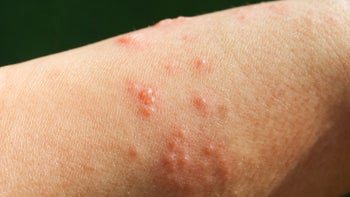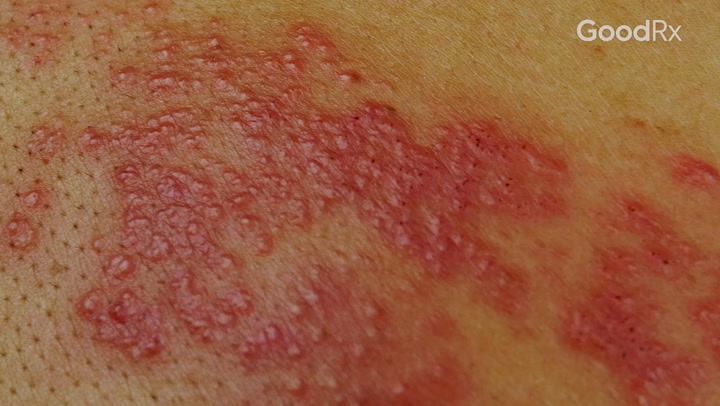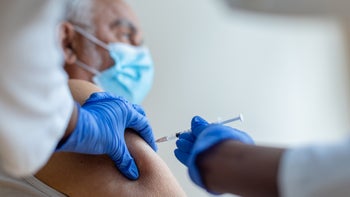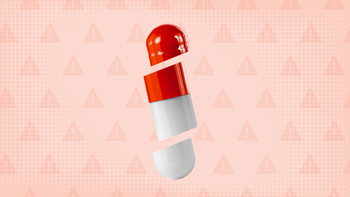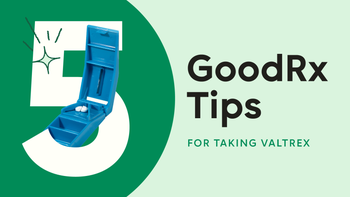
How Much Does a Shingles Vaccine Cost?
Key takeaways:
Without insurance, the shingles vaccine can cost about $400 for the complete two-dose regimen. That’s about $200 per dose.
Most people with insurance will pay nothing for the shingles vaccine. That’s because the Affordable Care Act (ACA) and the Inflation Reduction Act of 2022 don’t allow you to be charged out-of-pocket costs for certain vaccines, including the shingles vaccine.
The shingles vaccine is recommended for people 50 and older and certain adults 19 and older with weakened immune systems. It’s ideal to receive the doses from 2 to 6 months apart.
Access savings on related medications
Table of contents
If you live in the U.S., you have about a 1 in 3 chance of developing shingles in your lifetime. An estimated 1 million people get shingles in the U.S. each year.
People over age 50 and individuals with weakened immune systems are most at risk for shingles.
Shingrix is the only vaccine FDA-approved in the U.S. to prevent shingles.
SHINGRIX (Zoster Vaccine Recombinant, Adjuvanted) is now $0 for almost everyone*
Get SHINGRIX at the pharmacy or in-network doctor’s office today. 98% of privately insured people pay $0 and all Medicare Part D beneficiaries pay $0 at the pharmacy.
Prescribing Information
*Coverage and cost may vary and are subject to change without notice. Reimbursement decisions are made by individual insurance plans.


SHINGRIX is an FDA-approved vaccine for the prevention of shingles (herpes zoster) in adults 50 years and older. SHINGRIX is not used to prevent chickenpox.
• You should not receive SHINGRIX if you are allergic to any of its ingredients or had an allergic reaction to a previous dose of SHINGRIX
• An increased risk of Guillain-Barré syndrome (severe muscle weakness) was observed after vaccination with SHINGRIX
• Fainting can happen after getting injectable vaccines, including SHINGRIX. Precautions should be taken to avoid falling and injury due to fainting
• The most common side effects are pain, redness, and swelling at the injection site, muscle pain, tiredness, headache, shivering, fever, and upset stomach
• SHINGRIX was not studied in pregnant or nursing women. Tell your healthcare provider if you are pregnant, plan to become pregnant, or are breastfeeding
• Vaccination with SHINGRIX may not protect all individuals
• Ask your healthcare provider about the risks and benefits of SHINGRIX. Only a healthcare provider can decide if SHINGRIX is right for you
You are encouraged to report vaccine adverse events to the US Department of Health and Human Services. Visit www.vaers.hhs.gov to file a report, or call 1-800-822-7967.
For US audiences.
Trademarks are property of their respective owners.
©️2024 GSK or licensor.
PMUS-SGXWCNT240015 May 2024
Produced in the USA.
GoodRx Health information and resources are reviewed by our editorial staff with medical and healthcare policy and pricing experience. See our editorial policy for more detail. We also provide access to services offered by GoodRx and our partners when we think these services might be useful to our visitors. We may receive compensation when a user decides to leverage these services, but making them available does not influence the medical content our editorial staff provides.
In this article, we will discuss the costs and coverage of the Shingrix vaccine.
What is a shingles infection?
Shingles is an infection caused by the same virus as chickenpox: the varicella-zoster virus. It can cause painful rashes that appear on one side of the body or face. Severe cases can result in complications such as enduring nerve pain, eye problems, and pneumonia.
If someone has had chickenpox, the virus can show up as shingles later in their life. While most people have shingles only once, it’s possible to have another episode.
In addition to rashes, shingles can cause symptoms such as:
Chills
Fever
Headache
Unsettled stomach
The Shingrix vaccine can prevent shingles or lessen the intensity of symptoms if you have the condition. A previous shingles vaccine called Zostavax is no longer available in the U.S.
Keep reading for more details about the cost of Shingrix and insurance coverage.
There’s only one shingles vaccine in the U.S.: A previous shingles vaccine called Zostavax is no longer available in the U.S. So it’s recommended that you get Shingrix — which works better — even if you’ve already had the other shot.
Medicare prescription plans cover Shingrix: But original Medicare and Medicare Advantage plans only cover the shingles shot if you have a Part D prescription plan.
You can get shingles more than once: If your immune system can’t keep the varicella-zoster virus in check, you could be among the 6% of people who have recurrent shingles.
How much does the shingles vaccine cost?
As of January 2024, manufacturer GSK reports the list price for the Shingrix vaccine as $395.80 for the two-dose series, or $197.90 per dose.
If you don’t have health insurance, your pharmacy may charge more than the list price for the vaccine.
According to GoodRx, the average cash price per dose of Shingrix is $212.00. But you may pay less than the average retail price with a GoodRx coupon or other savings opportunity.
Insurance cost-sharing
Most people have health insurance, which means most people will have no out-of-pocket costs for Shingrix. Here’s how your insurance will affect your cost-sharing for the vaccine:
Original Medicare or Medicare Advantage: To pay nothing out of pocket, you need to have a Medicare Part D prescription plan and get your shots under that coverage. That means you must have a stand-alone Part D plan — which can pair with original Medicare (Part A and/or Part B) or a Medicare Advantage plan that doesn’t include prescription coverage. Most people with Medicare Advantage have a plan that covers prescriptions. Effective in 2023, the Inflation Reduction Act removed cost-sharing for adult vaccines that are recommended by the CDC’s Advisory Committee on Immunization Practices (ACIP) and covered under Medicare Part D — and that includes Shingrix. Most people receive the shingles vaccine at a pharmacy. If you want to receive one at your doctor’s office, make sure they can bill Medicare Part D for the vaccine.
Affordable Care Act (ACA, also known as Obamacare) or private insurance plans: The ACA requires certain ACIP-recommended vaccines to be covered as preventive care with no out-of-pocket costs. Shingrix was added to that list in 2022, so most people with ACA or commercial insurance plans will now pay nothing for the shots. This means you have no copay or coinsurance — even if you haven’t met your deductible.
Medicaid: Most states and the District of Columbia expanded Medicaid, and Shingrix is more likely to be covered under Medicaid in those places. The average Medicaid enrollee in those states pays less than $5 per dose.
At what age is the shingles vaccine free?
The CDC recommends Shingrix for people 50 and older with healthy immune systems and for people 19 and older with weakened immune systems, because this group has a higher risk of contracting shingles. Many people who qualify for a shingles vaccine, regardless of age, can receive the shot for free. What you pay depends on your insurance status.
You can get Shingrix at no cost if you have one of the following:
A commercial insurance plan (96% of people with private insurance pay $0)
A Medicare Part D prescription plan
No insurance and you qualify for the manufacturer’s GSK For You patient assistance program
Can I get help if I can’t afford Shingrix?
If you are uninsured or cannot afford Shingrix, you may qualify for the manufacturer’s patient assistance program. Visit gskforyou.com to find out if you’re eligible for financial help for Shingrix.
You also may be able to receive free or reduced-cost vaccinations through your state’s health department or a community health center. In some cases, state health departments provide free or low-cost shingles shots based on income. You can find more information about a program near you by visiting this U.S. Department of Health and Human Services website.
You also can check with a federally qualified health center or nonprofit clinic in your community. You can find health centers near you through locator tools provided by the National Association of Free & Charitable Clinics and the Health Resources and Services Administration.
Does Medicare cover the cost of the shingles vaccine?
As mentioned, having Medicare without a prescription plan will not provide coverage for Shingrix. You need to have a Medicare Part D plan to get the shingles vaccine without any out-of-pocket costs.
Frequently asked questions
Chickenpox and shingles are caused by the varicella-zoster virus. Because of this, anyone who has recovered from the chickenpox, including children, can get shingles. Shingrix doesn’t prevent you from getting chickenpox (there’s the varicella vaccine for that), but it can help prevent you from getting shingles.
Healthy individuals 50 and older can expect at least 7 years of immunity after receiving both Shingrix doses, the CDC reports. Doses are typically taken from 2 to 6 months apart.
In most people, the vaccine is more than 90% effective in preventing shingles and postherpetic neuralgia (long-term nerve pain), which is the most common complication of shingles. Shingrix is slightly less effective — but still 68% to 91% effective — in people with weakened immune systems.
According to the CDC, you shouldn’t get a Shingrix vaccine if you:
Have shingles
Are pregnant
Have ever had a severe allergic reaction to Shingrix or any of its components
You should also wait to recover from a moderate or severe illness — with or without a fever — before getting a dose of the vaccine.
The bottom line
As of January 2024, a full course (two doses) of the Shingrix vaccine costs $395.80, or $197.90 per dose. Most people will pay nothing at all for their vaccinations.
That’s because the Affordable Care Act and the Inflation Reduction Act of 2022 don’t allow people with ACA plans, private health insurance, or Medicare Part D to be charged out-of-pocket costs for certain vaccines. This includes the shingles vaccine.
If you have Medicaid, you will likely pay less than $5 per dose for Shingrix in most parts of the U.S. People without health insurance can qualify for a no-cost vaccine through the manufacturer’s patient assistance program.
Why trust our experts?



References
Centers for Disease Control and Prevention. (2016). Chickenpox/varicella vaccination.
Centers for Disease Control and Prevention. (2023). Shingles vaccination.
Centers for Disease Control and Prevention. (2023). Zoster (shingles) ACIP vaccine recommendations.
Centers for Disease Control and Prevention. (2024). About shingles (herpes zoster).
Centers for Disease Control and Prevention. (2024). Shingles symptoms and complications.
GSKForYou. (2023). GSK pricing information.
KFF. (2024). Status of state Medicaid expansion decisions: Interactive map.
Medicare.gov. (n.d.). Drug coverage (Part D).
Medicare.gov. (n.d.). Shingles shots.
National Institute on Aging. (2023). 5 things you need to know about shingles.
Shingrix. (n.d.). Cost & coverage.


